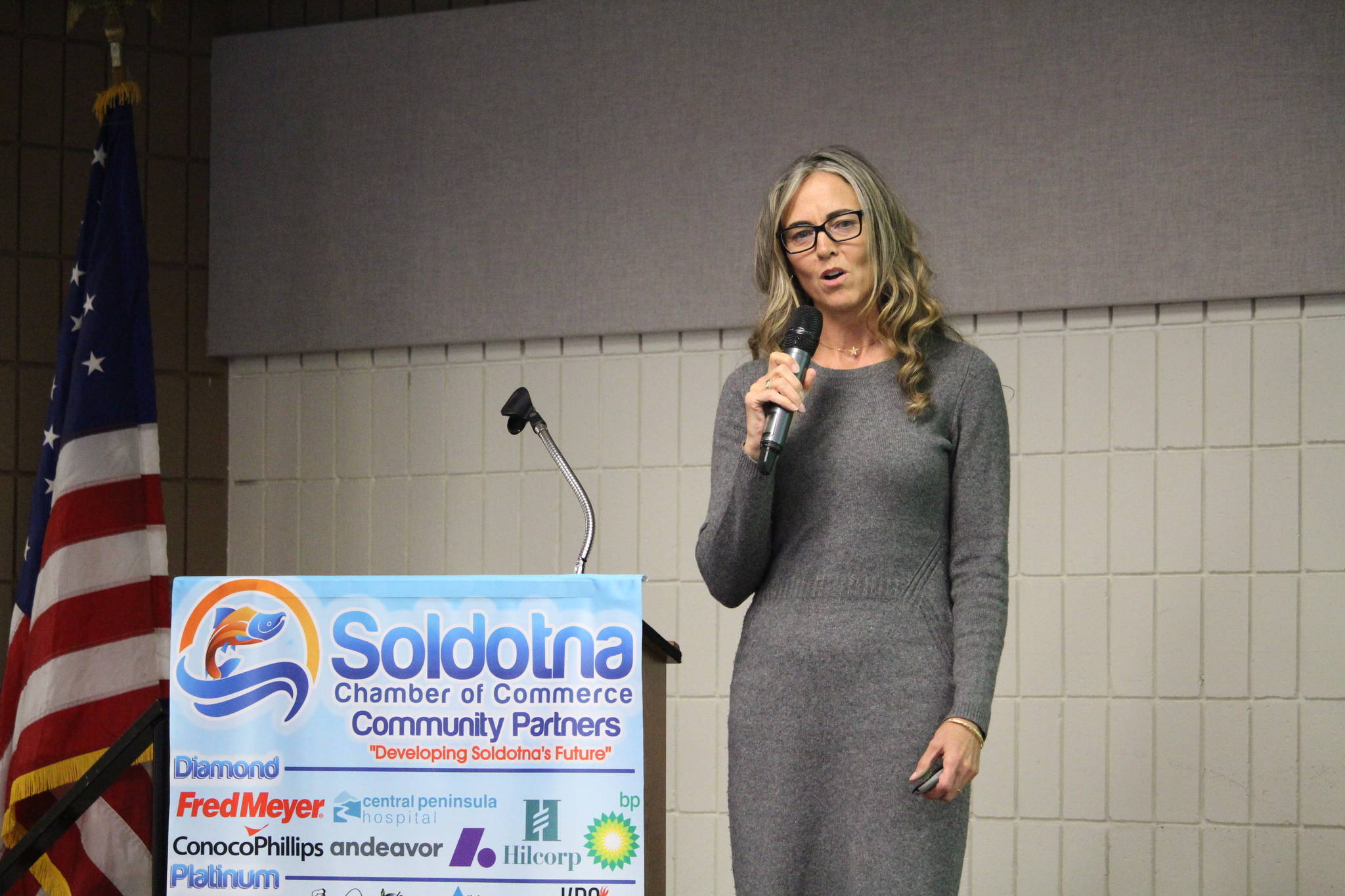The latest trends in opioid misuse and abuse were the topics of discussion during this week’s luncheon with the Kenai and Soldotna Chambers of Commerce.
On Wednesday, Dr. Kelly Olson, associate director of clinical affairs for Millennium Health, gave a presentation to chamber members breaking down some of the numbers related to the nationwide opioid crisis. Olson’s presentation included trends in the rates of overdose deaths and drug-mixing, and focused specifically on heroin and fentanyl use. Millennium Health is a laboratory that conducts drug tests and pharmacogenetic tests for clinicians.
Olson began the presentation by briefly explaining the effects that opioids have on the brain and body.
While there are opioid receptors in both the brain and the digestive system, Olson said that the ones with the potential for addiction are the ones that affect the brain.
“They’re (opioids) a brain depressant, and they attach to those receptors in the brain and basically slow us down,” Olson said. Large doses of opioids can slow basic bodily functions like respiration and heart rate to the point that users can become unconscious or unresponsive.
“That just sets the stage for the power of this type of substance in our brains,” Olson said.
Olson’s next slide illustrated a disturbing nationwide trend in substance abuse — the number of heroin users nationwide is on the rise, and the number of heroin-related deaths is increasing at an even faster rate.
Using data from the 2017 National Survey on Drug Use and Mental Health, Olson explained that from 2002 to 2017, the number of heroin users nationwide had doubled — from 404,00 to 886,000. Over that same period of time, the number of heroin deaths went from an estimated 2,013 to 15,594 — a nearly 800% increase.
Olson attributed both statistical trends to several factors: an increase in the demand, accessibility and purity of heroin combined with a decrease in its average price and a decline in the number of prescriptions for opioids. About 80% of recent heroin initiates, meaning those who recently started using for the first time, previously abused prescription pain relievers, according to Olson’s presentation.
“Purity is up and cost is down. That’s a perfect storm in terms of people being able to get their hands on these substances,” Olson said.
In regards to the increasing rates of deaths from heroin use, Olson said that a closer look at the data reveals the main cause: fentanyl. Olson said that Millennium Health looked at over 5 million urine samples collected nationwide and analyzed the rates of different drugs found in those samples. The number of tests showing positive results for both heroin and fentanyl rose from 2% of samples in 2013 to 39% of samples in 2018, according to the analysis.
“Now we’re not just dealing with one substance, we’re dealing with a poly-substance,” Olson said. “And I think that is incredibly important, especially since most folks don’t know when those two substances are on board.”
When results are divided by region, Millennium’s analysis showed that the samples testing positive for heroin and non-prescribed fentanyl were concentrated mostly on the East Coast, but with each passing year the trend moves further and further west. Olson said that the bulk of non-prescribed fentanyl is being manufactured in China.
The danger of fentanyl being mixed with heroin, Olson said, is twofold: heroin users are unlikely to realize that what they’re ingesting has been cut or mixed with other substances, and fentanyl is a much stronger opioid — 50 to 100 times more potent than morphine, according Olson’s presentation. The result is that any given dose can be unexpectedly fatal.
Among the audience members who asked questions during the presentation, several asked what they could do in the face of these concerning trends.
Olson said that being armed with the knowledge of the current trends is the first step in addressing the crisis. The second step is sharing that knowledge with friends and family and knowing the local resources that are available for those seeking help with substance abuse.
“You already did more than most people do — you sat through my presentation,” Olson said. “So education and knowing what’s in your community to get people in front of the right folks that can help them, that’s huge.”

